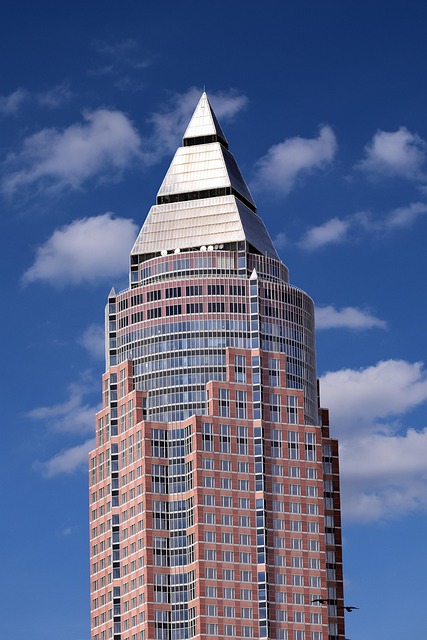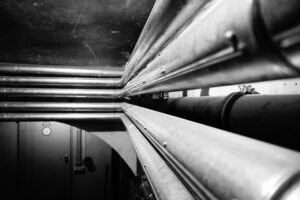Industrial air doors are essential for maintaining controlled access and environmental integrity in manufacturing settings, protecting against outside elements and optimizing temperature control. Motion sensors have revolutionized their operation, enhancing safety and efficiency by detecting movements accurately and activating doors only when needed. These sensors, including PIR, laser, and ultrasonic technologies, streamline workflow, reduce energy costs, and improve workplace safety, making them indispensable for modern industrial automation. Implementing automatic air doors involves assessing facility needs, choosing suitable door types and sensor tech, strategic installation, and testing for optimal performance.
“Revolutionize your facility’s safety and efficiency with automatic industrial air doors—a cutting-edge solution that leverages motion sensors. This article delves into the transformative power of these advanced systems, exploring their crucial role in enhancing workplace safety and optimizing operations. We’ll navigate the evolution of motion sensor technology, understand their impact on various industries, and provide a step-by-step guide to implementing automatic air doors for optimal results.”
- Understanding Industrial Air Doors: Their Role and Importance
- The Evolution of Motion Sensors in Automation
- How Motion Sensors Improve Safety and Efficiency
- Types of Motion Sensors for Automatic Doors
- Implementing Automatic Industrial Air Doors: A Step-by-Step Guide
Understanding Industrial Air Doors: Their Role and Importance

Industrial air doors play a pivotal role in various industrial settings, serving as essential components of manufacturing door systems. They act as robust entrance barriers, providing controlled access and maintaining environmental integrity within facilities. These heavy-duty air doors are designed to seal off large openings, creating an effective barrier against outside elements and ensuring optimal conditions inside. Whether it’s a warehouse, factory, or cold storage facility, these doors are crucial for industrial climate separation, preventing temperature fluctuations and maintaining the required atmosphere.
In manufacturing environments, where processes demand specific climates, air doors offer a solution for warehouse opening protection and factory entrance solutions. They quickly seal off entry points, controlling the flow of people, materials, and climate-controlled air. This functionality is particularly valuable during loading dock activities, where efficient and secure access is essential for smooth logistics operations. With their ability to create airtight seals, large opening air curtains and industrial HVAC barriers contribute to energy efficiency by minimizing heat transfer, reducing the workload on HVAC systems, and enhancing overall operational productivity.
The Evolution of Motion Sensors in Automation

The evolution of motion sensors in automation has revolutionized industrial processes, particularly in the realm of industrial air doors and entrance systems. What was once a manual or simple sensor-based mechanism has transformed into a sophisticated technology that enhances efficiency and safety across various industries. Modern motion sensors have become indispensable components in manufacturing door systems, warehouse opening protection, and factory entrance solutions, ensuring optimal operation and worker well-being.
These advanced sensors are now capable of detecting subtle movements with remarkable accuracy, enabling the activation of heavy-duty air doors, loading dock barriers, and cold storage air doors. By integrating these technologies into industrial climate separation and HVAC barrier systems, facilities can achieve seamless operations while maintaining strict temperature controls. The versatility of motion sensors in applications like these has made them a game-changer in optimizing workflow, enhancing productivity, and providing robust warehouse opening protection.
How Motion Sensors Improve Safety and Efficiency

The implementation of motion sensors in industrial settings, particularly for automatic air doors, brings about significant improvements in both safety and efficiency. One of the primary advantages is enhanced worker protection. Traditional door systems often rely on manual operation, which can lead to accidents, especially in high-traffic areas or when handling heavy machinery. Motion sensors eliminate this risk by activating doors only when movement is detected, ensuring no one is trapped or harmed. This feature is crucial in factories and warehouses where numerous employees are constantly entering and exiting.
Moreover, these sensors optimize the overall workflow by streamlining access control. Unlike manual doors that might require constant supervision, motion-activated air curtains, often referred to as industrial air doors, provide a seamless opening and closing process. This not only saves time but also reduces energy costs in manufacturing door systems, cold storage facilities, or loading docks. With warehouse opening protection in place, the efficient management of internal climates becomes possible, especially with heavy-duty air doors designed for industrial climate separation, ensuring optimal working conditions throughout.
Types of Motion Sensors for Automatic Doors

In the realm of industrial automation, the choice of motion sensors is pivotal for efficient and safe operation of automatic air doors. These sensors play a crucial role in detecting and controlling access to manufacturing door systems, warehouse openings, and factory entrances. Popular types include passive infrared (PIR) sensors, which detect heat differences, ideal for large openings like cold storage air doors and heavy-duty air curtains. Additionally, laser sensors offer precise range measurements, ensuring accurate activation of industrial entrance barriers and loading dock barriers, even in harsh environments.
Ultrasonic sensors, another option, transmit sound waves to measure distance, making them suitable for factory entrance solutions and industrial HVAC (heating, ventilation, and air conditioning) barriers, where reliability and precision are paramount. With advancements in technology, these sensors not only enhance the functionality of industrial climate separation but also contribute to improved safety by preventing unauthorized access and ensuring efficient warehouse opening protection.
Implementing Automatic Industrial Air Doors: A Step-by-Step Guide

Implementing Automatic Industrial Air Doors: A Step-by-Step Guide
1. Assess Your Needs: Begin by evaluating your facility’s specific requirements. Consider factors like entry and exit points, traffic flow, environmental conditions (e.g., temperature control), and safety standards. This will help you choose the appropriate type of industrial air door, such as heavy-duty air curtains or cold storage air doors, designed to handle various applications.
2. Select the Right Technology: Motion sensors are key to automatic industrial air doors. Choose between infrared, laser, or ultrasonic sensors based on your needs. Infrared sensors are cost-effective and suitable for basic applications, while laser and ultrasonic sensors offer higher accuracy and can penetrate obstacles better, ideal for complex environments.
3. Install Sensors Strategically: Position the sensors at entry points to detect approaching personnel or vehicles. Ensure they cover the full width of large openings, like warehouse doors or loading docks, using solutions like large opening air curtains. For better control, consider installing multiple sensors to create zones, allowing for precise activation and energy efficiency.
4. Integrate with Door Systems: Connect the sensors to your chosen industrial door systems, whether manufacturing door systems, factory entrance solutions, or industrial HVAC barriers. Ensure compatibility and seamless communication between sensors and doors for reliable operation.
5. Test and Calibrate: After installation, thoroughly test the system to ensure proper functioning. Calibrate sensors for optimal performance, adjusting sensitivity levels as needed. Regular maintenance checks will guarantee prolonged door life and uninterrupted warehouse operations.
Automatic industrial air doors, powered by motion sensors, represent a significant advancement in automation. By seamlessly integrating safety and efficiency, these doors not only streamline industrial processes but also contribute to a more productive and secure working environment. As the technology continues to evolve, businesses can expect even greater optimization and cost savings, solidifying the role of industrial air doors as a game-changer in modern manufacturing.






